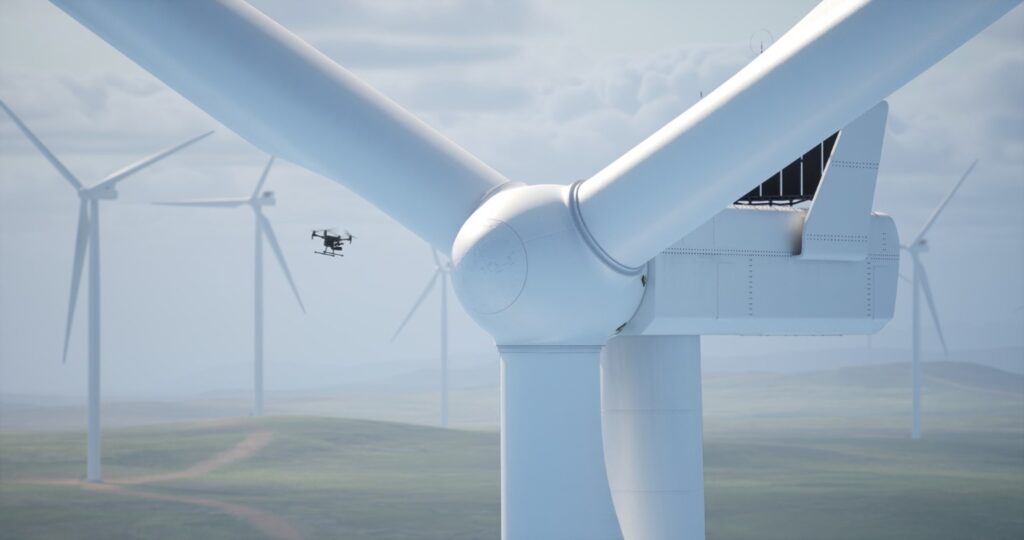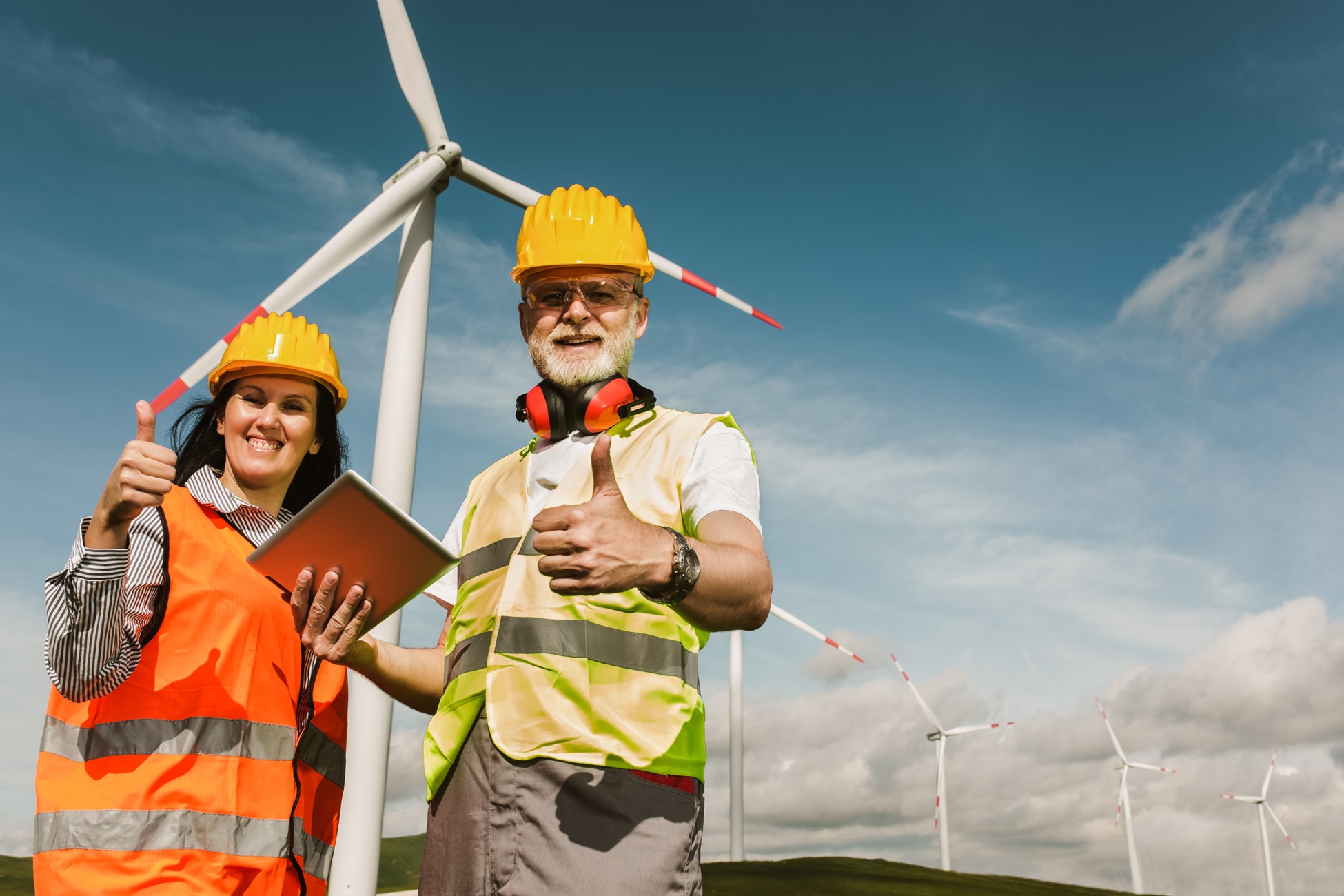Boosting Efficiency, Safety and Savings with Drones in Wind Turbine Management
The wind energy sector is a cornerstone of the renewable energy revolution. Optimizing wind turbine management, operations, maintenance, and safety is crucial for maximizing wind energy production. Drones are emerging as a game-changing technology, offering significant improvements across all these areas. This blog explores how drone technology can revolutionize wind turbine management by leveraging advanced capabilities. We’ll also provide key facts and figures to support their growing adoption.

From Hours to Minutes: Rapid Inspections and Maintenance
Traditionally, wind turbine inspections were time-consuming and expensive, often requiring technicians to scale turbines or use cranes. High-resolution cameras and sensors equipped drones can conduct comprehensive inspections in a fraction of the time. A typical drone inspection takes just 20-40 minutes, compared to several hours needed for manual inspections.
Cost Savings: A Significant Advantage in Wind Turbine Management
Drone technology can significantly reduce inspection and maintenance costs by up to 50%. According to the American Wind Energy Association (AWEA), traditional inspections cost around $1,500 per turbine, whereas drone inspections can bring that cost down to $750. This substantial cost reduction allows operators to allocate resources more efficiently and increase inspection frequency without breaking the bank. Companies such as Xcel Energy and Ørsted
Precision Wind Turbine Management and Predictive Analytics
Detailed Data Collection for Informed Decisions
Drones are equipped with advanced imaging technology like thermal cameras and LiDAR, enabling them to collect precise data on turbine blade condition, structural integrity, and potential defects. This data allows for early detection of issues like blade erosion, cracks, and lightning strikes, preventing costly repairs and unplanned downtime.

Predictive Maintenance: Proactive, Not Reactive
Integrating drone data with predictive analytics can transform maintenance strategies. By analyzing historical and real-time data, operators can predict when a turbine component is likely to fail and schedule maintenance proactively. This approach extends the lifespan of turbine components, reduces unexpected failures, and enhances overall operational reliability.
Enhancing Safety in Wind Turbine Management
Minimizing Human Risk: Safety First
Wind turbine management and inspection expose workers to significant risks like falls, electrical hazards, and harsh weather conditions. Drones eliminate the need for technicians to climb turbines, substantially reducing the risk of accidents and injuries. The National Institute for Occupational Safety and Health (NIOSH) reports that drones can lower work-related injuries by up to 30%.

Enhanced Emergency Response
In the event of a turbine malfunction or extreme weather event, drones can be deployed quickly to assess damage and identify hazards. This rapid response capability ensures that necessary actions are taken promptly to secure the site and mitigate further risks. Emergency response is a critical element of wind turbine management.
Environmental Considerations
Sustainable Operations for a Greener Future
Drones contribute to more sustainable wind turbine operations by reducing reliance on heavy machinery and vehicles, which typically consume fossil fuels. This reduction in carbon footprint aligns perfectly with the wind energy industry’s commitment to environmental stewardship and supports global sustainability goals.

Protecting Wildlife with Drone Monitoring
Drones can also be utilized to monitor the impact of wind turbines on local wildlife, such as bird and bat populations. By providing real-time data on wildlife interactions, operators can implement measures to mitigate negative impacts, contributing to biodiversity conservation.

Conclusion: A Compelling Case for Drones in Wind Turbine Management
The integration of drone technology in wind turbine management presents a compelling case for enhanced operational efficiency, cost savings, improved maintenance precision, and increased safety. By adopting drones, wind turbine operators can not only optimize their processes but also contribute to a safer and more sustainable energy future. The facts and figures presented in this blog underscore the transformative potential of drones, making them an indispensable tool for the wind turbine industry.







